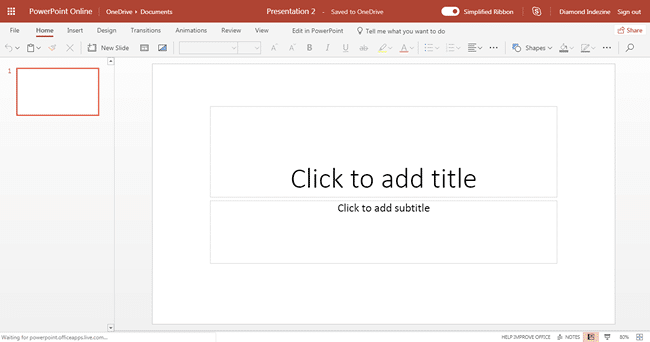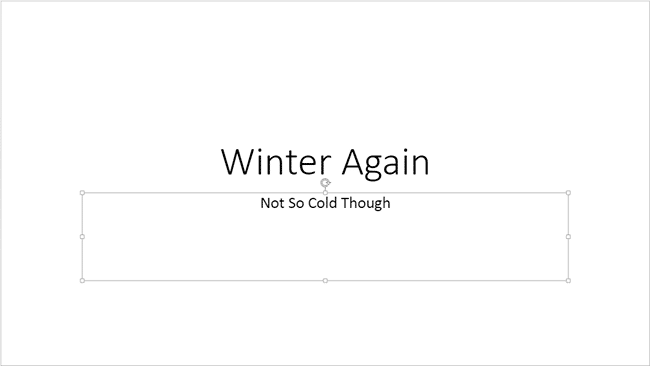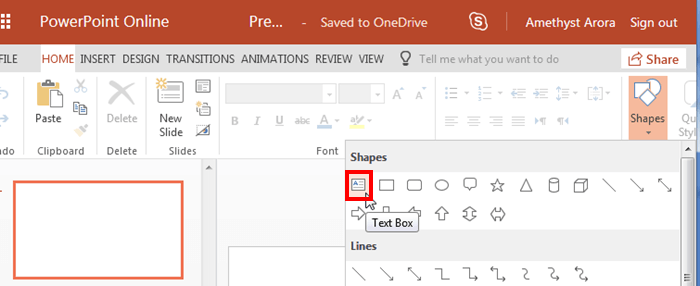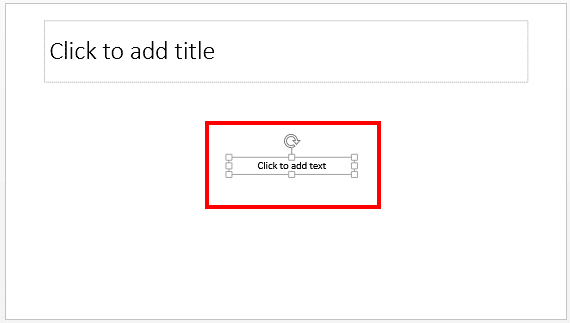Learn about the differences between text placeholders and text boxes in PowerPoint for the Web. The differences can be significant.
Author: Geetesh Bajaj
Product/Version: PowerPoint for the Web
OS: Microsoft Windows and Mac OS X
PowerPoint has three types of text containers:
We explain Shapes in our comprehensive section on Shape tutorials. Let us now look at the other two text container types. Aren't Text Placeholders and Text Boxes the same? Are they really different? And why should we bother even if they are different?
All these are valid questions, and the answers to these questions will help you create more structured presentations. Let us begin by exploring the relationship between Text Boxes and Text Placeholders in PowerPoint Online.
Text within a Text Placeholder has characteristics that set it a class apart from all other text within a PowerPoint slide. So what exactly is a Text Placeholder, and how is it different from a Text Box or any other text container?
Figure 1 shows several Text Placeholders within different PowerPoint Slide Layouts. As you can see, most Slide Layouts have at least two Text Placeholders. Some layouts have even more. If needed, you can even create custom Slide Layouts with more Text Placeholders. Of course, you cannot create custom Slide Layouts in PowerPoint Online, but you can do so in desktop versions of PowerPoint, and PowerPoint Online will allow you to use these layouts.

Figure 1: Text Placeholders
Also, note that only text content within the placeholders is part of the presentation's outline. Let's explore text content that shows up as a part of the outline in various Slide Layouts, as marked in Figure 1, above:
A. In a slide that contains a title and subtitle, text content of both placeholders is contained within the outline.
B. In a slide that contains a title and a single Content placeholder (used for Text, Table, Chart, SmartArt, Picture, Online Picture, other Media Elements), the outline comprises just the text, and not the tables, charts, SmartArt graphics, etc.
C. In a slide that has only a title, the outline comprises just the title.
D. In a slide that contains a title and two Content placeholders (Text, Table, Chart, SmartArt, Picture, Online Picture, other Media Elements), the outline comprises text within all placeholders.
If your slide has the Blank layout that has no Text Placeholders, then no text within that slide is contained within the presentation's outline.
To understand differences between Text Placeholders and Text Boxes more clearly, follow these steps:





As you saw, the main difference between Text Placeholders and Text Boxes is that while the former are part of the Slide Layout, the latter needs to be inserted. Also you can see text content from Placeholders within the slide outline, but the slide outline is not yet exposed in PowerPoint Online, although you can open your presentation in a desktop version of PowerPoint, where you will be able to see the outline.
Also, when you delete all text in a Text placeholder, you will see the original prompt text, as shown in Figure 2. On the other hand, delete all text in a Text Box, and your Text Box becomes invisible, even though it exists. You can't see it unless you press Ctrl+Z quickly to undo, or click on the position of the Text Box!
See Also:
Text and Outlines: Text Placeholders vs. Text Boxes in PowerPoint (Index Page)
Text Placeholders vs. Text Boxes in PowerPoint 365 for WindowsYou May Also Like: Presentation Management is Risk Management | Jordan Flags and Maps PowerPoint Templates




Microsoft and the Office logo are trademarks or registered trademarks of Microsoft Corporation in the United States and/or other countries.